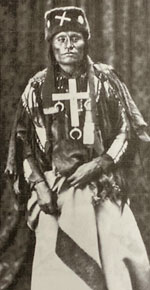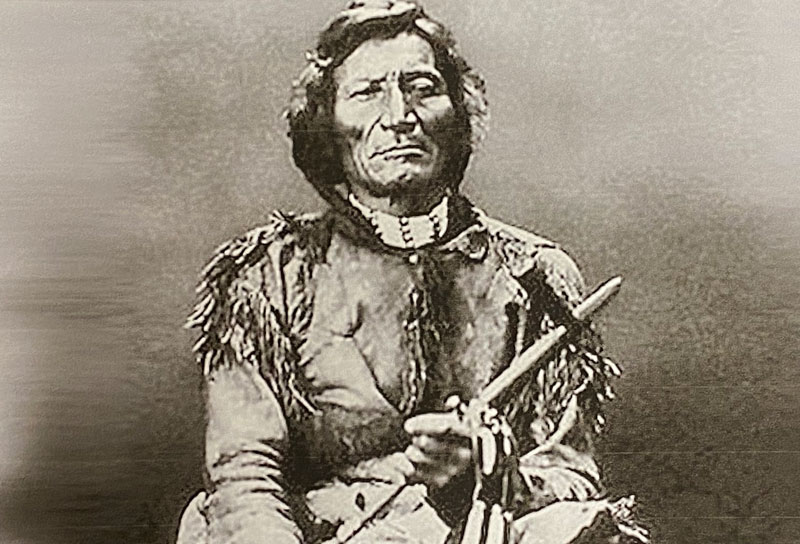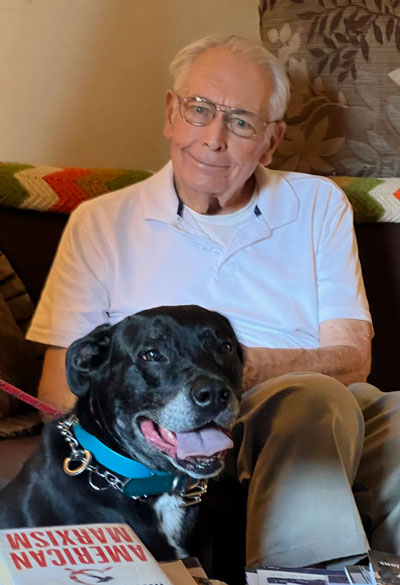
In Part 1 of this series, I introduced you to two famous Chiefs of the Northern Cheyenne people, namely “Little Wolf” and “Morning Star”, who was better known by the name he was given by the Sioux people: “Dull Knife”. During the last half of the 19th century, the concept of “Manifest Destiny”, or the expansion of the American experiment from the Atlantic to the Pacific, began to seriously clash with the concepts entertained by most of the Native Peoples that they had the right to continue to live on their traditional lands as they always had. It became obvious to both sides, as this century unfolded, that one or the other had to emerge victorious, with its vision of the future the only accepted one. As usual in the flow of human history, those with the best technology and the strongest motivations emerged victorious.
THE DULL KNIFE BATTLE

After the loss of General Custer and his command at The Little Bighorn, the U.S. Army pressed the Cheyenne People without mercy. In 1876 a group of 1400 Northern Cheyenne people traveled further south of the Little Bighorn to spend the winter, erecting a large village of about 175 lodges. The U.S. Army, in its endless attempts to quell the resistance of the Cheyenne and other Native Peoples, ordered Col. Ronald MacKenzie and his command of 750 cavalrymen, plus at least 400 Indian scouts who worked for the Army, to pursue Chiefs Dull Knife, Little Wolf, and others and “subdue” them.
Becoming aware that the U.S. Army was pursuing them, many of the Northern Cheyenne people urged their chiefs to move to a more secure location, but another chief, Last Bull, persuaded them to not relocate their camp. Sadly, on the freezing morning of Nov. 25, 1876, the pursuing U.S. military reached the Northern Cheyenne village and immediately began to attack it. Awakened by the attacking cavalrymen, the Cheyenne warriors began a fierce resistance to protect themselves and their women and children, most of whom were able to flee to hills overlooking their camp. Col. MacKenzie’s men were able, during this attack on the village, to capture a large herd of the Cheyenne’s horses. They also totally destroyed the village. Without their shelter, food and horses, the Northern Cheyenne faced almost certain calamity in the harsh conditions of winter. Those who survived the attack by the U.S. military were able to temporarily shelter among other friendly Native People’s villages.
By 1877, the great Sioux Chief, Crazy Horse, surrendered at Fort Robinson, causing some of the Cheyenne chiefs to also surrender. They were Dull Knife, Little Wolf, Standing Elk, and Wild Hog, along with around 1000 of their people. The U.S. Bureau of Indian Affairs in Washington, D.C. decided that the Northern Cheyenne, along with their Southern Cheyenne kinsmen and the Arapaho People, needed to be punished for daring to resist the demands of the Bureau and the U.S. Army, and for daring to massacre Gen. Custer and his command.
CONFINEMENT IN OKLAHOMA TERRITORY
The long march to the Cheyenne-Arapaho reservation in “Indian Territory” (present-day Oklahoma) began in Spring of 1877 when 972 men, women, and children began the long trek from Montana to Oklahoma Territory. When they reached the reservation in August of 1877, there were only 937 people left, for some of the elderly had perished during the forced march and some of the younger men left the main band and headed back north to Montana. It wasn’t long before the leaders of the Northern Cheyenne internees noticed that their new “Indian Reservation” was lacking in resources to support them. The humid climate of their new “Indian Territory” where they had been exiled caused their people to begin to sicken by the late summer of 1877, as malaria and other diseases unknown to them on the high plains of their Montana homeland began to take a serious toll. Of the 900 or so who arrived in the Indian Territory, about two-thirds became sick within a few months of their arrival. Forty-one were reported to have died of disease during the winter of 1877-78.
Medical supplies, such as they were, didn’t show up on the reservation until mid-winter, far too late to help many of the Cheyenne. Promised beef rations were too little to adequately supply the population of Native People, and hunger was rampant. By late 1877, hide hunters had virtually exterminated all the buffalo on the central and southern plains, meat that the Cheyenne and others depended upon for survival. The U.S. government gave the Cheyenne permission to hunt on and near the reservation, but game in the Indian Territory was virtually non-existent. On top of these problems, in early 1878 a measles outbreak began to sicken and kill many of the Northern Cheyenne people in the Oklahoma Territory reservation.
By the spring of 1878, most of the Northern Cheyenne people concluded that their existence on their reservation was becoming intolerable. In early July, 1878, Chief Little Wolf and others formally requested their Indian Agent, John Miles, to allow them to return to their homes in Montana and Dakota Territory. Sadly, Miles and his superiors, who despised all “Indians”, refused to give permission to the Chiefs. Deciding that survival was more honorable and important than obeying the dictates of their reservation “wardens”, in August, 1878, the Cheyenne Chiefs began to organize their relocation. On Sept. 9, 1878, Northern Cheyenne Chiefs Little Wolf, Dull Knife, Wild Hog, and Left Hand told their people to get ready to return to their homelands. Somewhere between 300 and 350 men, women, and children made their final preparations, and thus began the saga of desperate heroism known to American history as The Great Exodus of the Northern Cheyenne.
------------------------------
NEXT TIME: The Northern Cheyenne begin their escape back to their homelands; the U.S. military does its best to stop this exodus. Conflicts happen between white settlers, the U.S. Army, and the Northern Cheyenne, and their quest for freedom causes fear and consternation among Americans living directly in the path of the Cheyenne Exodus.
NOTE: “Next time” for publishing parts 3 & 4 may be in a few weeks, depending on what other “crises” have to be written about. Please be patient, and the final two parts will soon arrive.













